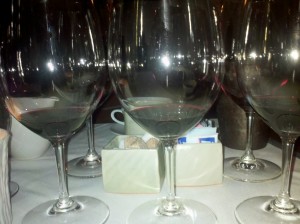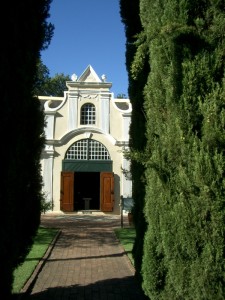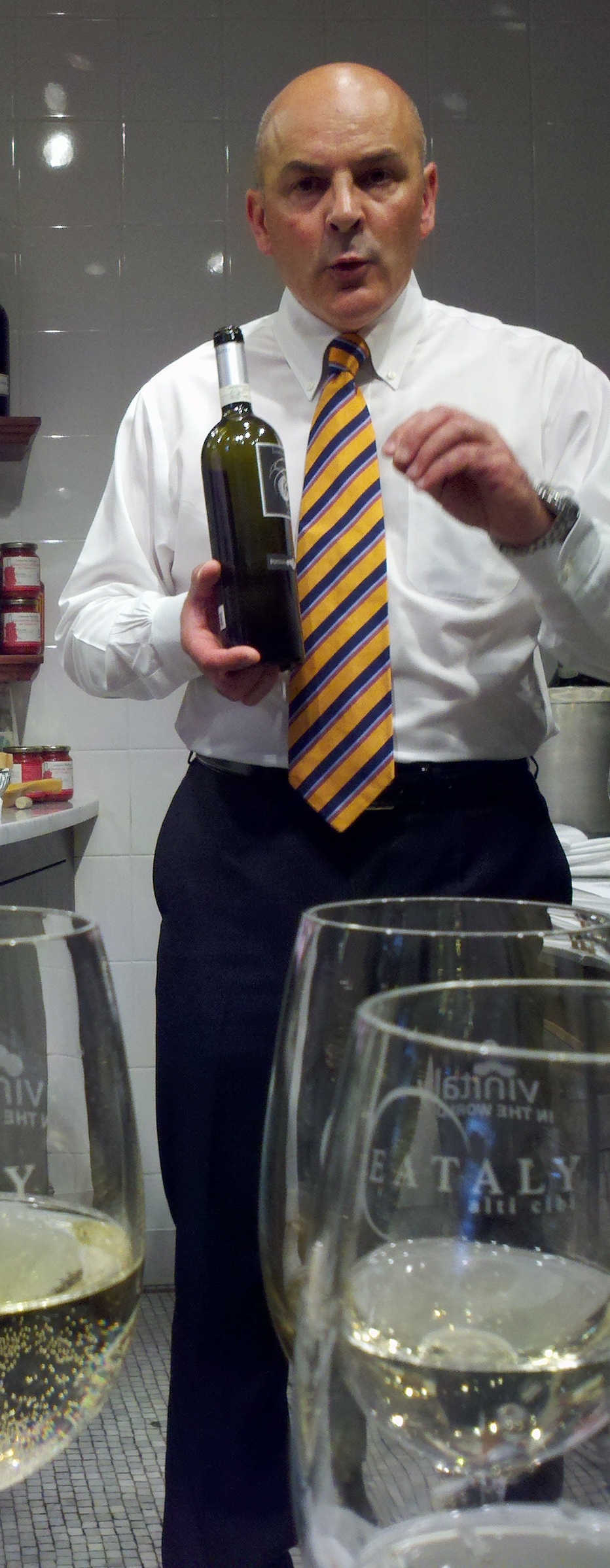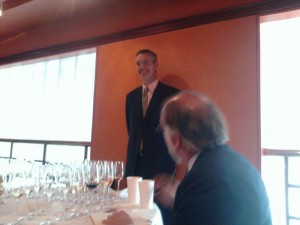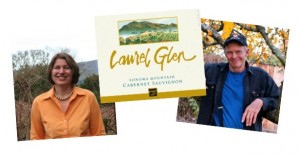While it is great to hear from winemakers about their wines, it isn’t exactly a unique experience. However, listening to a panel of winemakers from around the globe talk about key issues in the wine world is a special treat. And, one perhaps made even better when that panel is moderated by Kevin Zraly.
In July 2010, amidst a torrential downpour, I arrived at Moet-Hennessy’s Chelsea offices damp, but not downtrodden. Welcoming the cup of coffee that was offered, I spent some time viewing various displays for Moet-Hennessy products. Once everyone had arrived and was assembled in the conference room, the Winemakers’ Forum began.
The panel included Leone Contini Bonacossi, Owner of Capezzana; Marc Sorrel, Estate Director for Chateau de Sancerre; Nicolas Audebert, Cheval des Andes’ winemaker; Ian Morden, Estate Director for Cloudy Bay; Joel Burt, Assistant Winemaker at Domaine Chandon; Andrea Leon, Winemaker for Casa Lapostolle; Andrea Felluga, Livio Felluga’s winemaker; Laura Bianchi, owner of Monsanto; Chris Millard, executive winemaker at Newton Vineyard; Winemaker Manuel Louzada from Numanthia; and Terrazas’ senior winemaker, Adrian Meyer.
Kevin kicked off the session by asking the winemakers to share their favorite wine memories, especially those that cemented their interest in, and love for, wine. For some, it was a single wine – perhaps a 1996 Bandol (Adrian), Krug 1928 (Nicolas) or a Bonne Mares from one’s birth year (Marc). For others, it was a particular experience – tasting sparkling wine in the winery with one’s grandfather (Manuel) or stealing down into the cellar at 13 (Andrea L.) or 5 (Leone) and drinking from either the bottle or barrel, respectively. And, as Ian reminded everyone, context is everything; “You can’t divorce wine from the occasion.”
Trekkies know that space is the final frontier, but Kevin next queried where in the world was the next wine frontier. There was a diversity of responses ranging from the need to explore higher altitudes due to climate change and the shift in wine styles to up-and-coming grape varieties and regions. There was no one grape variety identified, but rather, certain varieties were associated with new areas such as Syrah in New Zealand’s Hawkes Bay; Chenin Blanc in Stellenbosch, South Africa; Petit Verdot in Maipu, Chile; and the rediscovery of Trebbiano, Malvasia and Friulano.
Building on the topic of change and innovation, the discussion then centered on changes in winemaking. On this, there was more consensus among panel members. Many spoke about the return to more traditional winemaking and a less is more approach. Another theme was an increased emphasis on the vineyard and terroir.
Viticultural advances were further noted such as drip irrigation and the development of rootstocks. A focus on balance was also mentioned, whether through canopy management, matching grape varieties with the right climate or achieving balance in the wine itself.
Here, Mary Ewing-Mulligan asked the panel to address the fact that the alcohol is not in balance even though winemakers say it’s not about alcohol. In response, Nicolas explained that sometimes waiting for full maturity in the grapes results in high alcohol levels. He added that while “[the alcohol level] could be high and be too much, it could [also] be high and you don’t feel it.” “I feel it,” said Mary.
With regard to wine in the market, both Laura and Marc lamented that consumption habits had declined in Europe, especially with the younger generation which drinks less wine and more beer and cocktails. While others agreed, Ian countered that new markets, especially China and Brazil, were becoming increasingly sophisticated with regard to wine.
More specific to the American market, Leone expressed pleasant surprise at the level of knowledge displayed by the people at her hotel’s reception desk. She was impressed with the broad picture they had on wine compared with young Italians whom, she said, have a more regional palate.
When Kevin mused about the outlook for the U.S. – Is it generally getting better? There was a resounding yes from the group. However, this sentiment needs to be tempered in light of recent economic issues.
And, what was their opinion of American wines? A number of people mentioned the quality of Oregon wines, naming its Pinot Noirs and sparkling wines in particular. However, Laura confessed that she had tasted American Sangiovese, but wasn’t worried about the competition (she produces Chianti, which is primarily made from Sangiovese).
Questioned about wine critics, the feeling was that critics play an important role, helping to narrow the field for the consumer. However, it was also admitted that, like any system, it has some good and bad elements associated with it. While Andrea L. stated that it was rewarding as a winemaker to receive high scores, Nicolas emphasized that, “if you are making wine as a passion, you are not making wine for critics.” Joel also suggested that the power of big critics is waning due to blogs, an opinion that Chris shared.
As a final topic, the conversation turned to biodynamics and organics. A few, such as Nicolas and Adrian, admitted that being organic was easy for them due to climatic conditions. Yet, Andrea F. and others pointed to high rainfall and humidity as impediments to such practices. However, the overall feeling was that such viticultural practices were crucial in and of themselves, not as marketing efforts. Consequently, many winemakers don’t indicate their practices on the label. In this regard, Joel proposed that, “It’s important to be stewards of the land,” an emotion echoed by Andrea F., who noted that, “We have to take care of the planet.”

